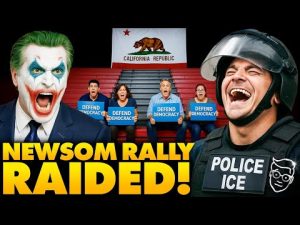The recent unfolding of events involving Kash Patel and a supposedly explosive declassification of intelligence touches on a subject that continues to ignite debate: the origins of the infamous Russia-Trump conspiracy theory. At the heart of this current controversy is an assertion from Patel, the current FBI director, that a certain set of intelligence reveals the conspiracy theory was hatched by none other than Hillary Clinton. The allegation, if true, paints a troubling picture of the lengths to which political figures are willing to go in order to undermine their opponents.
The claim centers around an email exchange between Clinton’s allies, wherein it is suggested that Clinton herself approved a scheme to link Trump to Russia. Naturally, such a revelation would cause significant waves, hinting at a level of political machination and manipulation that voters find unsettling. However, the narrative becomes murkier when scrutinized further. A previous special counsel investigation, initiated under Trump’s administration, had delved into the matter and concluded that the email in question was likely fabricated by Russian intelligence. They allegedly constructed it by amalgamating hacked emails, misleadingly presenting Clinton as the perpetrator of a grand conspiracy.
Patel’s decision to highlight this email as a so-called “smoking gun” is perplexing when considering the context provided by the earlier investigation. It’s important to note that, according to the special counsel’s findings, the composite email was built upon real hacked emails. This admission shakes the narrative on both ends. On one hand, it suggests that the data manipulation was indeed sophisticated and deeply concerning. On the other hand, it illustrates a potential oversight or misrepresentation by Patel, who should have been aware of the broader context surrounding the document.
The situation underscores a broader issue with political discourse today—how selective use of information can shape narratives and influence public opinion. Often, the complexity of what happens behind closed doors is reduced to simplified storylines that fit preconceived agendas. This leaves the public to wade through murky waters, trying to discern truth from partially constructed realities. As this story unfolds, it serves as a reminder of the need for transparency and measured analysis rather than jumping to conclusions based on incomplete or dubious information.
Ultimately, this episode raises questions about the integrity of political tactics and the power dynamics at play in the highest echelons of influence. How much can the public trust the messengers when the message itself may be tainted with bias or mischaracterization? The pursuit of transparency remains essential in these discussions, coupled with the responsibility to ensure that the information brought to light is accurate and contextually sound, reaffirming the tenet that a well-informed electorate is the cornerstone of democracy.







